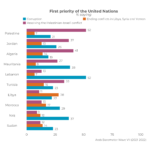The past 20 years have seen enormous progress around the world in socioeconomic indicators. The rapid diffusion of technology and greater access to capital and world markets have enabled economic growth rates that were previously unfathomable, and they have helped lift over 1 billion people out of poverty. And yet increased flows have also led to rising inequality, both within and across borders, and to greater vulnerability to global economic trends and cycles. Indeed, although the global spread of capital, technology, ideas, and people has helped many countries and people move forward, other regions and populations appear to have been left behind, and they are still facing violence, slow growth, and limited opportunities for advancement. As ideas and resources spread at an increasingly rapid rate across countries, policy solutions to promote further progress abound. However, policies that should be effective in generating positive development outcomes are often not adopted, are poorly implemented, or end up backfiring over time. Although the development community has focused a great deal of attention on learning what policies and interventions are needed to generate better outcomes, it has paid much less attention to learning why those approaches succeed so well in some contexts but fail to generate positive results in others.
Visit External SiteTopics
- Charity2
- Corruption115
- COVID-1969
- Democracy40
- Discrimination14
- Economy228
- Education52
- Environment37
- Extremism19
- Freedoms51
- Gender Issues160
- Governance255
- Health45
- International Relations195
- Labor Market36
- Media31
- Migration64
- Political Institutions214
- Political Participation35
- Political Systems63
- Refugees6
- Religion118
- Security34
- Social Justice45
- Wellbeing2
- Youth76


